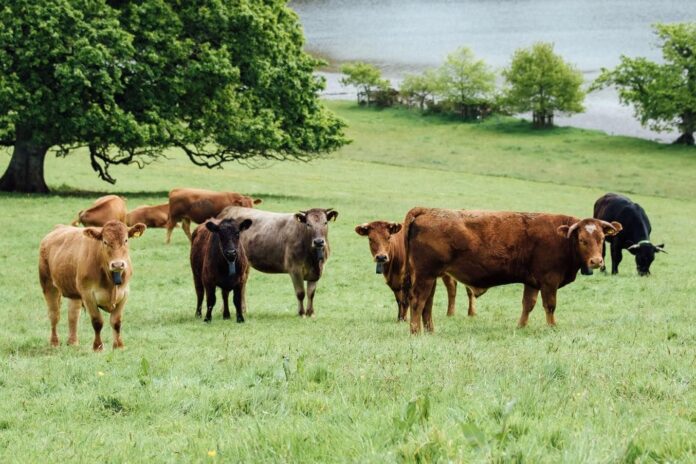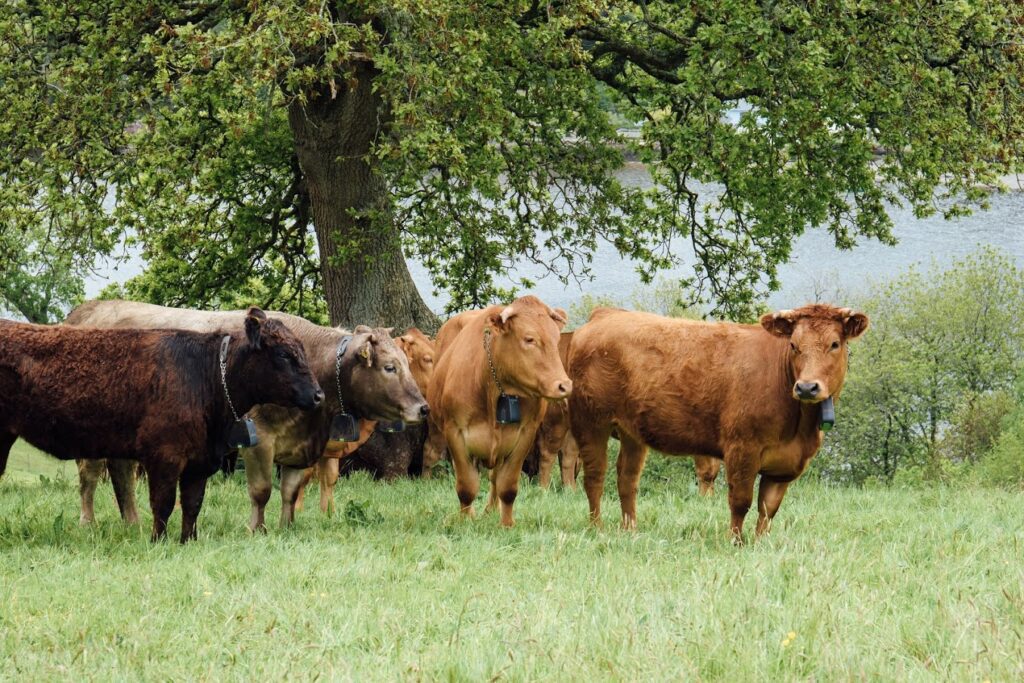

Managing end of season grazing to support next spring’s forage production
Virtual fencing technology helps with autumn grazing management in preparation for the 2023 season
With grass growth slowing down and the end of the grazing season approaching, virtual fencing technology offers livestock producers a unique tool to start management for 2023 forage production, says farm consultant James Daniel, Managing Director for Precision Grazing Ltd.
Perennial plants like grasses, clovers and herbs need a chance to recover after grazing to regrow their leaves and replenish energy reserves before the next grazing event, this ensures high productivity and plant resilience. As day length shortens and soil temperature reduces during autumn and winter, this rest period increases to be 120 days. This means a field grazed on 1st November should not be grazed again until 1st March.
“Achieving this rest period requires a plan and the ability to accurately allocate the feed on farm pasture to livestock to ensure they are fed to demand in what they need and not appetite – what they want,” explains Mr Daniel.
Following successful UK farm trials of Nofence virtual fencing technology, Mr Daniel sees it as a useful tool for livestock producers to overcome these challenges.
Using a combination of GPS, mobile data network, audio signals and solar power to work with animal behaviour and create a ‘virtual pasture,’ livestock wearing Nofence collars can be allocated to an area to graze with no physical fencing, explains Synne Foss Budal, General Manager for Nofence UK.
“Within the Nofence app, farmers can quickly map out, create and move virtual fencing,” says Miss Budal. “Not only does this allow for long-term strategic grazing planning that can be modified easily if weather conditions change, but it cuts down on labour associated with moving fences during an already busy time of year.”
Putting together an autumn grazing plan
To ensure pastures and silage fields used for grazing hit that 120-day rest period sweet spot, Mr Daniel says to assess early spring forage needs for different stock groups and to then work backwards.
“For spring calvers and lambers, pasture in the spring is worth three to four times the value of pasture in the winter as it is high quality and able alone to support all of the animals’ nutritional needs in late pregnancy and during lactation. Therefore farmers want to start spring with a cover of pasture across the farm which provides leaves to capture sunlight and grow more pasture, as well as a ‘buffer’ of feed to allow for any delay in spring growth,” he says. “Managing a true rest period will help achieve that.”
While the exact rest/grazing strategy will vary from farm to farm, there are a few hard and fast rules Mr Daniel says apply to everyone.
“On the final grazing of a field, aim to graze down to the height of a golf ball for sheep, and a tennis ball for cattle. This will encourage high quality pasture next spring,” he says.
Mr Daniel recommends, especially for sheep farmers, to combine flocks where possible, this simplifies grazing planning with fewer groups to think about, and means that fields can be grazed in less time. If a field cannot be grazed within seven days it should be divided in half. This will reduce soil damage and prevent any regrowth from being re-grazed for more pasture in the spring.
In the event of wet weather setting in, protecting sward conditions must be made a priority to avoid long-lasting damage which is caused mainly not by the total number of animals, but by animals in one place for too long. This may mean being prepared to move animals to new pasture every one to two days.
On-farm management scenario

Towards the end of the autumn, producers might start getting into situations where forage availability does not match stock requirements. If they are not ready to start housing, one option is to buffer feed the lowest priority groups with hay or silage to extend the rotation, explains Mr Daniel. It’s also worth looking at what management decisions are possible to reduce feed requirements.
Using data from a beef farmer part of an initial Nofence pilot project, Mr Daniel explains two options available in this type of situation.
Farm background
- 40 head of cows and spring-born calves
- 18.2 ha (45 acres) of pasture available
- Start of final grazing rotation: 1st October
- End of final grazing rotation: 10th November
- Number of days = 40
- Area per day = 0.45ha (1.1 acres)
Calculation
- Assuming cows are grazing pasture at target “beer can” this would be equivalent to an entry cover of ~3000kgDM/ha
- Aiming to graze down to between a golf ball to tennis ball height would be equivalent to a residual cover of ~1500kgDM/ha
- This means total pasture available = 1500kgDM/ha (3000kgDM/ha – 1500kgDM/ha =1500kgDM/ha)
- Allocating 0.45ha (1.1Acres) per day means pasture available per day = 683kgDM/day (1500kgDM/ha x 0.45ha = 683kgDM/day)
Herd requirements
- 1 cow-calf pair requires 20kgDM/day
- Total demand for the group = 800kgDM (40 pairs x 20kgDM = 800kgDM)
- The group demand is greater (117kgDM) than the available pasture. Action needs to be taken otherwise the pasture will be grazed too low and animal performance will be reduced
“If calves are at least 180 days old and in good body condition, one option is to wean eight calves and remove their mothers from the group. This would reduce demand by 112kgDM (14kgDM/cow),” explains Mr Daniel. “The second option is to buffer feed to make up for the deficit. A round bale of silage is around 240kgDM, therefore the group would receive one bale every two days.”
Using virtual fencing technology for improved grassland management
When an animal crosses the Nofence boundary, a three-stage audio warning will sound, giving a single electric pulse via the collar if the animal has not turned back on the audio. This method of having cows use their sense of hearing to detect virtual fences rather than their sense of sight to detect physical fences has proven very effective in many UK grazing systems, including managed grazing, upland grazing and for grazing for conservation purposes, says Miss Budal.
“The ability to implement managed grazing practices without the need for physical fencing is a huge opportunity for farms that don’t have adequate physical fencing infrastructure or the labour resource required to move fences and groups of livestock regularly,” explains Miss Budal. “Especially in wet autumn conditions, we see Nofence farmers make better and faster management decisions for the benefit of their grassland because they aren’t physically having to battle with physical fencing.”
Help keep news FREE for our readers
Supporting your local community newspaper/online news outlet is crucial now more than ever. If you believe in independent journalism, then consider making a valuable contribution by making a one-time or monthly donation. We operate in rural areas where providing unbiased news can be challenging. Read More About Supporting The West Wales Chronicle






















